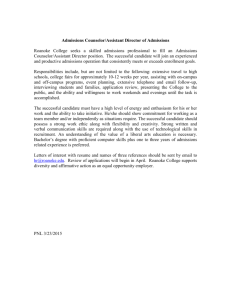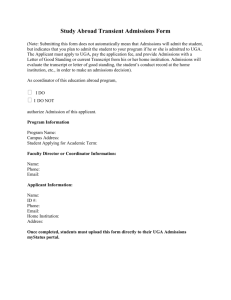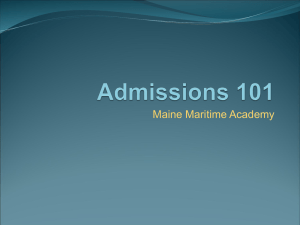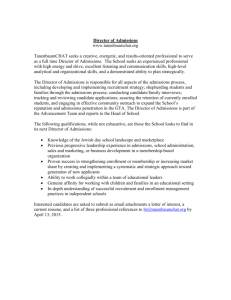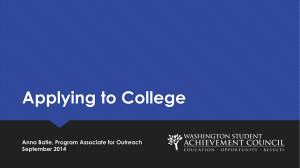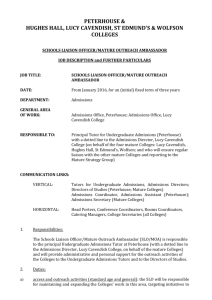College admissions` dirty little secrets
advertisement
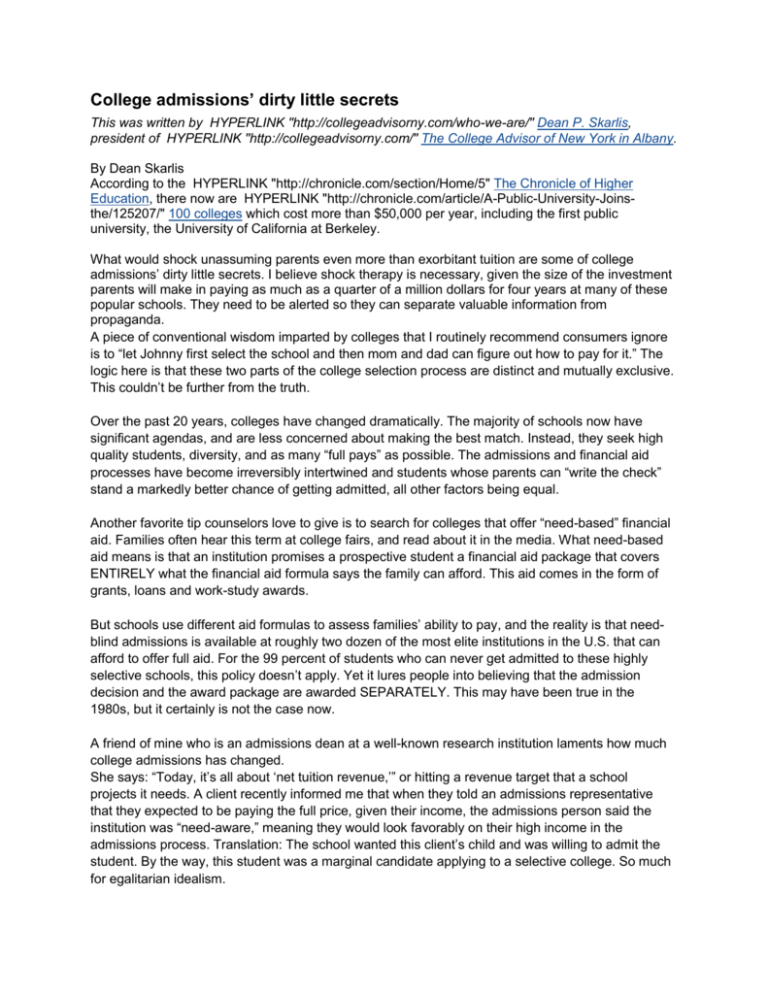
College admissions’ dirty little secrets This was written by HYPERLINK "http://collegeadvisorny.com/who-we-are/" Dean P. Skarlis, president of HYPERLINK "http://collegeadvisorny.com/" The College Advisor of New York in Albany. By Dean Skarlis According to the HYPERLINK "http://chronicle.com/section/Home/5" The Chronicle of Higher Education, there now are HYPERLINK "http://chronicle.com/article/A-Public-University-Joinsthe/125207/" 100 colleges which cost more than $50,000 per year, including the first public university, the University of California at Berkeley. What would shock unassuming parents even more than exorbitant tuition are some of college admissions’ dirty little secrets. I believe shock therapy is necessary, given the size of the investment parents will make in paying as much as a quarter of a million dollars for four years at many of these popular schools. They need to be alerted so they can separate valuable information from propaganda. A piece of conventional wisdom imparted by colleges that I routinely recommend consumers ignore is to “let Johnny first select the school and then mom and dad can figure out how to pay for it.” The logic here is that these two parts of the college selection process are distinct and mutually exclusive. This couldn’t be further from the truth. Over the past 20 years, colleges have changed dramatically. The majority of schools now have significant agendas, and are less concerned about making the best match. Instead, they seek high quality students, diversity, and as many “full pays” as possible. The admissions and financial aid processes have become irreversibly intertwined and students whose parents can “write the check” stand a markedly better chance of getting admitted, all other factors being equal. Another favorite tip counselors love to give is to search for colleges that offer “need-based” financial aid. Families often hear this term at college fairs, and read about it in the media. What need-based aid means is that an institution promises a prospective student a financial aid package that covers ENTIRELY what the financial aid formula says the family can afford. This aid comes in the form of grants, loans and work-study awards. But schools use different aid formulas to assess families’ ability to pay, and the reality is that needblind admissions is available at roughly two dozen of the most elite institutions in the U.S. that can afford to offer full aid. For the 99 percent of students who can never get admitted to these highly selective schools, this policy doesn’t apply. Yet it lures people into believing that the admission decision and the award package are awarded SEPARATELY. This may have been true in the 1980s, but it certainly is not the case now. A friend of mine who is an admissions dean at a well-known research institution laments how much college admissions has changed. She says: “Today, it’s all about ‘net tuition revenue,’” or hitting a revenue target that a school projects it needs. A client recently informed me that when they told an admissions representative that they expected to be paying the full price, given their income, the admissions person said the institution was “need-aware,” meaning they would look favorably on their high income in the admissions process. Translation: The school wanted this client’s child and was willing to admit the student. By the way, this student was a marginal candidate applying to a selective college. So much for egalitarian idealism. Using both need-based financial aid and merit scholarships, the dirty little secret is that schools are leveraging “the best” students – this term is relative to every college and every student. Colleges throw more money at the kids they want the most—athletes, strong academicians, minority students, and students gifted in music or other talent that will shed more glory on the institution. If parents want to pay less, they need to understand which colleges want their child most and why. They must consider cost early in the process, and be realistic in considering schools that are not among the top brands. There are hundreds of “hidden gems” across the country, and families who approach the process strategically stand a better chance of finding them. Finding great schools at a lower price can be a mind-boggling process for busy, working parents, but they have to understand that they are their own best advocates. Colleges have the financial aid shell game down to a science. Consumers are mostly oblivious to the fact that the admissions and aid processes are not simple and noble. Given the absurdly expensive cost of many popular schools, families should wake up to the fact that they must consider cost early in the college selection process. For admissions advice, college news and links to campus papers, please check out our Higher Education page at HYPERLINK "http://washingtonpost.com/higher-ed" washingtonpost.com/highered


